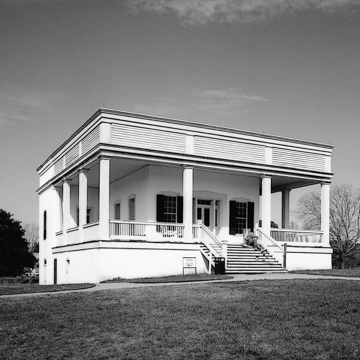Highly unusual and advanced in its construction, the house was built by Colonel Joshua W. Young using limecrete, an early form of poured-in-place concrete. The use of this material was of interest to Frederick Law Olmsted, who commented in A Journey Through Texas (1859) on the material's durability and low cost. By the end of the nineteenth century, more than ninety limecrete structures had been built in Seguin. The T plan of the house places the main room at the base of the T, which is flanked on three sides by porches. The most unusual feature of the design is the panlike roof, which may have served as a collecting basin for rainwater. The choice of the name for the house is still a mystery. Named after its later owner Joseph Zorn, who served as mayor of Sequin from 1890 to 1910, the house is open to the public under the jurisdiction of the Texas Historical Commission.
You are here
Joseph Zorn House, “Sebastopol”
If SAH Archipedia has been useful to you, please consider supporting it.
SAH Archipedia tells the story of the United States through its buildings, landscapes, and cities. This freely available resource empowers the public with authoritative knowledge that deepens their understanding and appreciation of the built environment. But the Society of Architectural Historians, which created SAH Archipedia with University of Virginia Press, needs your support to maintain the high-caliber research, writing, photography, cartography, editing, design, and programming that make SAH Archipedia a trusted online resource available to all who value the history of place, heritage tourism, and learning.


